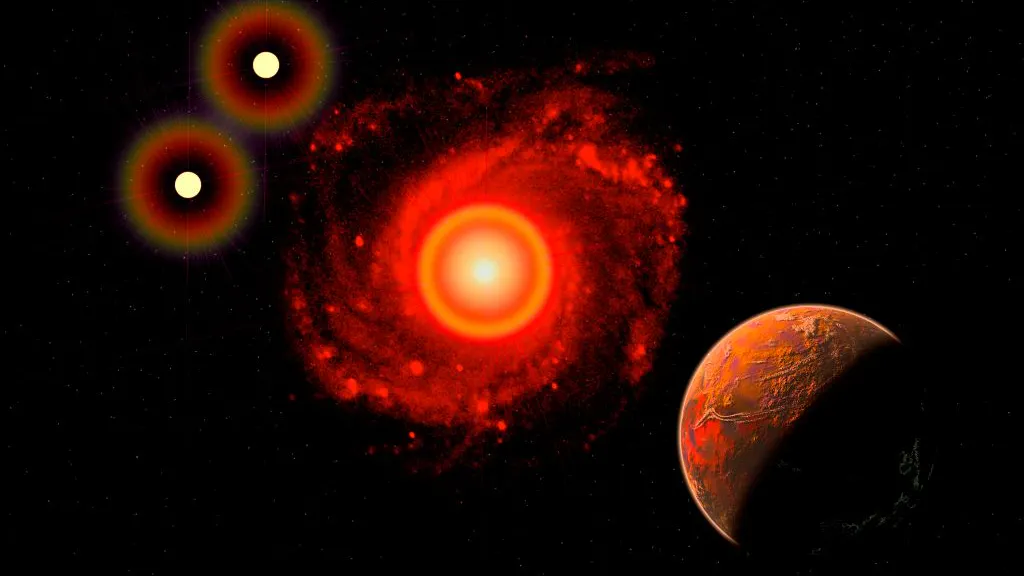Scientists who look for extraterrestrial life have reported a radio signal coming from the direction of the nearest star to the sun, Proxima Centauri, triggering one scientist to say it was the “first serious candidate” since the “Wow! signal” discovered in 1977 of extraterrestrial life.
“The narrow beam of radio waves was picked up during 30 hours of observations by the Parkes telescope in Australia in April and May last year … Analysis of the beam has been under way for some time and scientists have yet to identify a terrestrial culprit such as ground-based equipment or a passing satellite,” the Guardian reported.
Scientists at the Breakthrough Listen Project, which searches for alien life through radio telescopes, have noted that Proxima Centauri, 4.2 light years from Earth, has “two confirmed planets, a Jupiter-like gas giant and a rocky world called Proxima b in the habitable zone,” as the Daily Mail noted, adding, “Proxima b is an Earth-like rocky world that orbits within the ‘habitable zone’ of its star – that is an area where liquid water could flow on the surface of the planet. However, as the star is a red dwarf, the habitable zone is very close, meaning the planet is likely tidally locked and exposed to intense radiation, making it unlikely any civilization has been able to form – at least on the surface.”
Pete Worden, director of Breakthrough Initiatives, cautioned the signals probably originated from Earth-based sources but also said there was no conclusive evidence as yet.
Lewis Dartnell, an astrobiologist from the University of Westminster, echoed to the Guardian, “’We’ve been looking for alien life for so long now and the idea that it could turn out to be on our front doorstep, in the very next star system, is piling improbabilities upon improbabilities. The chances of the only two civilizations in the entire galaxy happening to be neighbors, among 400 billion stars, absolutely stretches the bounds of rationality.”
“It is not only the statistics that look bad. Proxima b is so close to its parent star that it is tidally locked, like the moon is to the Earth. One side is eternal day, the other in perpetual darkness,” the Guardian noted.
Dartnell concluded, “It’s hard to imagine how you can have a stable climatic system and all the things you need to get from bacteria, which are hardy, up to intelligent animal life forms, which certainly are not. But I’d love to be proved wrong.”
Dr. Jerry Ehman wrote in 1997 of the Wow! Signal:
When we look at the stars in our sky, we see them “twinkling.” That twinkling is due to each photon coming from the point source experiencing a slightly different travel path on the way to our eyes than other photons. The earth’s atmosphere accounts for nearly all of the differences imposed on these photons. We do not see the planets twinkle because a planet has an observable angular diameter and the effects applied to the photons from the various directions of the planet tend to average out.
When radio and optical waves travel through the interstellar medium (which is somewhat like our atmosphere except much more rarefied), those waves (photons) experience a kind of twinkling effect called “interstellar scintillation.” It is possible for there to be an enhancement of the signal passing through this interstellar medium due to a partial coherence effect. If this effect did occur for the Wow! source, it still points to a signal originating many light-years away from us, thus tending to give more support for the hypothesis of a signal of an extraterrestrial origin.
Thus, since all of the possibilities of a terrestrial origin have been either ruled out or seem improbable, and since the possibility of an extraterrestrial origin has not been able to be ruled out, I must conclude that an ETI (ExtraTerrestrial Intelligence) might have sent the signal that we received as the Wow! source. Of course, being a scientist, I await the reception of additional signals like the Wow! source that are able to be received and analyzed by many observatories. Thus, I must state that the origin of the Wow! signal is still an open question for me. There is simply too little data to draw many conclusions. In other words, as I stated above, I choose not to “draw vast conclusions from ‘half-vast’ data.”

Continue reading this exclusive article and join the conversation, plus watch free videos on DW+
Already a member?

.png)
.png)

